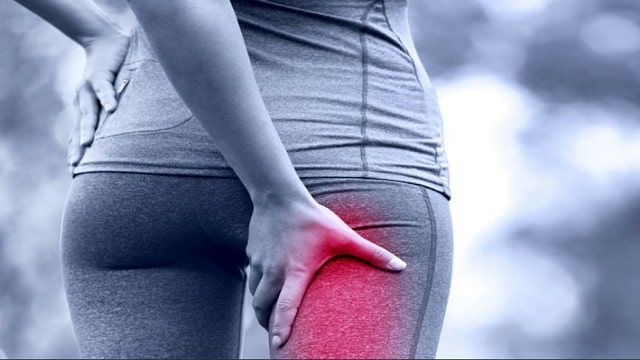What Is a Hamstring Injury?
Hamstring injuries are injuries that affect the three main muscle groups of the posterior aspect of the thigh at the back. The three muscle groups are the semitendinosus, semimembranosus, and biceps femoris.
These muscles are not used much when a person is standing or walking. The hamstring muscles will be very active when a person does activities that require a person to bend the legs, such as running, jumping, and climbing.
By doing physical activity beyond the limit, the risk of hamstring injury increases. To reduce the risk of hamstring injury, regular muscle stretching and muscle strengthening exercises are needed.
Symptoms of Hamstring Injury
Typically, the symptoms of a hamstring injury depend on how severe the condition is. Here are the details of the symptoms based on severity:
- Grade 1: The hamstring muscles are only slightly pulled or strained. The injured leg can still bear weight. Usually, the healing period is only a few days.
- Grade 2: Partial tear of the hamstring muscles. It feels more painful, looks swollen, bruised, and the injured leg is weaker when bearing weight. The healing period can be several weeks to several months.
- Grade 3: The entire hamstring muscle is torn. Very painful, swollen, bruised, feels like a tearing sensation at the time of injury, and the leg cannot be used at all for walking. The healing period can be several weeks to several months.
Causes of Hamstring Injuries
Hamstring injuries are caused by the muscles in the back of the thigh being stretched beyond their capacity. This can happen when someone makes a sudden movement such as sprinting, jumping, or lunging suddenly.
In addition, hamstring injuries can also occur when someone does a slow movement but pulls the back of the thigh muscles excessively. If someone has had a hamstring injury, they are at greater risk of getting the same injury.
Some factors that put someone at risk of developing a hamstring injury are:
- Poor muscle flexibility. This can cause the muscles to be unable to withstand the load of certain activities that require muscle flexibility.
- Unbalanced muscle development. Some experts say that if the front thigh muscles develop stronger, the back thigh muscles (hamstrings) are more susceptible to injury.
- Sports, sprinting or dancing require the hamstring muscles to stretch more. This will increase the risk of hamstring injury.
- History of hamstring injury. If someone has had a hamstring injury, they are at greater risk of having another.
Risk Factors for Hamstring Injuries
There are several things that can put someone at greater risk of experiencing a hamstring injury, including:
- Age, older people are more likely to experience pulled hamstring muscles.
- Had previous injuries.
- Pinched lower back nerve.
- Doing excessive sports activities.
- Fatigue and poor health conditions.
Hamstring Injury Diagnosis
Diagnosis of hamstring injury is determined based on a medical interview and physical examination. Scanning examinations, such as X-rays and Magnetic resonance imaging (MRI).
MRI can also help doctors diagnose hamstring injuries, although it is not a requirement.
Hamstring Injury Treatment
The primary treatment for a hamstring injury focuses on reducing pain and swelling in the injured area.
However, it is important to remember that alternative treatments such as massage or massage should be avoided without a doctor’s guidance, as they may worsen the injury or cause additional complications.
As a first step, a cold compress can be used to relieve pain. If the pain persists, see a doctor immediately.
Here are some treatment methods recommended by medical personnel:
1. Independent Handling
For those with mild hamstring injuries, the RICE method (rest, ice, compression, and elevation) can be applied:
- Rest: Get enough rest and avoid activities that trigger injuries.
- Ice: Apply a cold compress to the injured area for 10–15 minutes every 2–3 hours.
- Compression: Wrap the injured area with a bandage to reduce swelling and movement.
- Elevation: Place your thighs higher than your heart by stacking pillows when lying down.
2. Medicines
Doctors will usually also prescribe nonsteroidal anti-inflammatory drugs, such as naproxen or ibuprofen, to relieve pain and reduce inflammation.
3. Physiotherapy
Once the pain and swelling have reduced, you may be advised to undergo physiotherapy to restore normal muscle function.
This physiotherapy also aims to increase the flexibility and strength of the hamstring muscles.
4. Operation
If the hamstring muscle is torn or the muscle is completely detached from the hip or knee bone due to severe pulling, surgery is an option.
This condition is serious and requires immediate medical attention to reconnect the detached muscle.
Hamstring Injury Prevention
To prevent your muscles from being susceptible to injury, make it a habit to warm up first before exercising.
Also, get used to walking or jogging so that your leg muscles are not “shocked” when walking long distances and for long periods of time.
A balanced diet and adequate fluid intake are also very important to avoid electrolyte imbalance and dehydration.
Dehydration can cause muscle cramps, increasing the risk of muscle injury. Some experts also recommend taking nutritional supplements, such as antioxidants.

